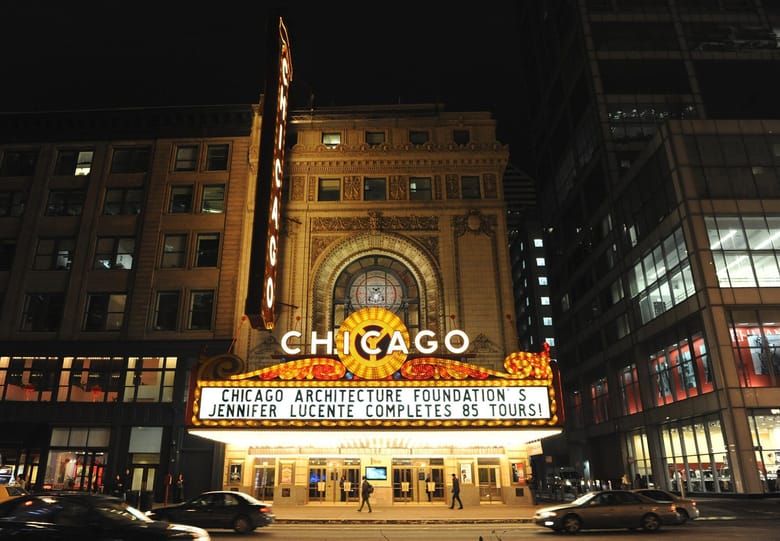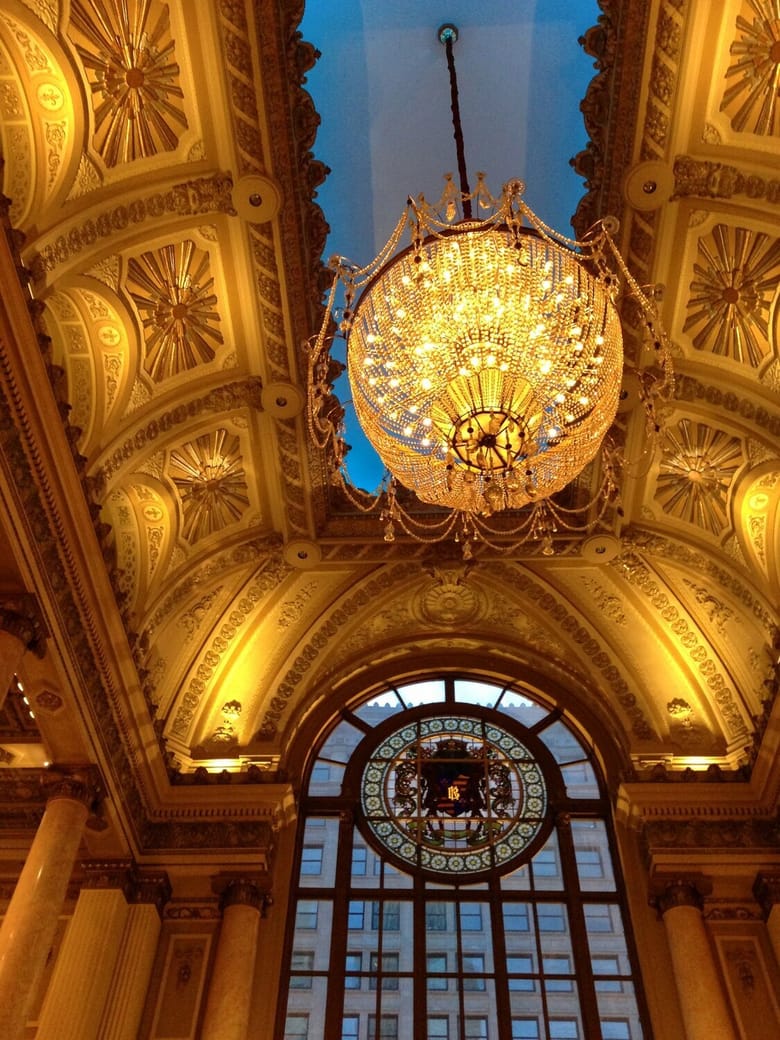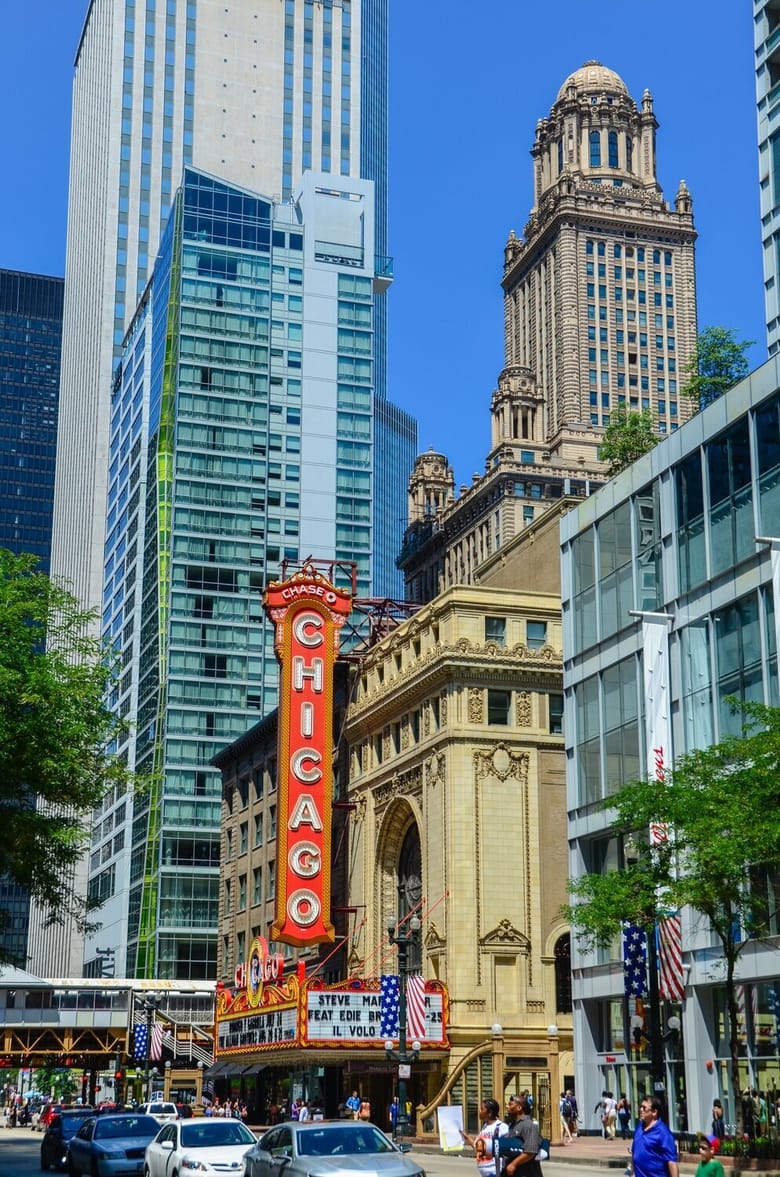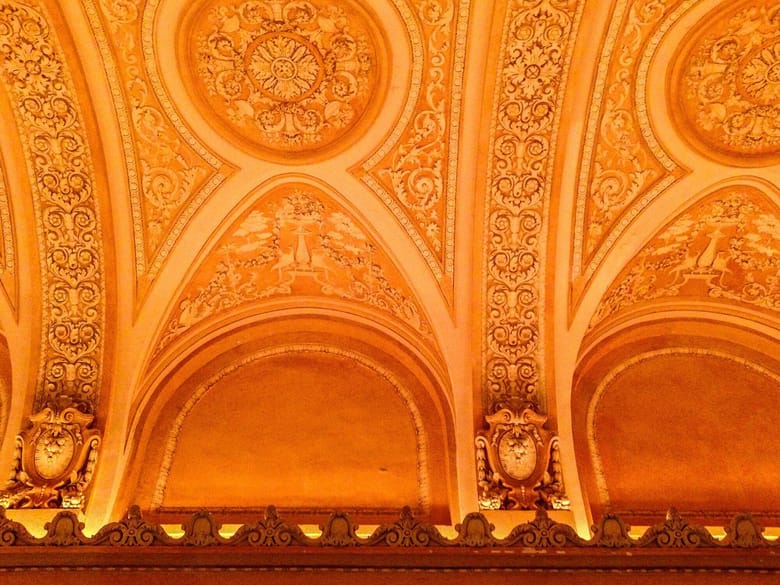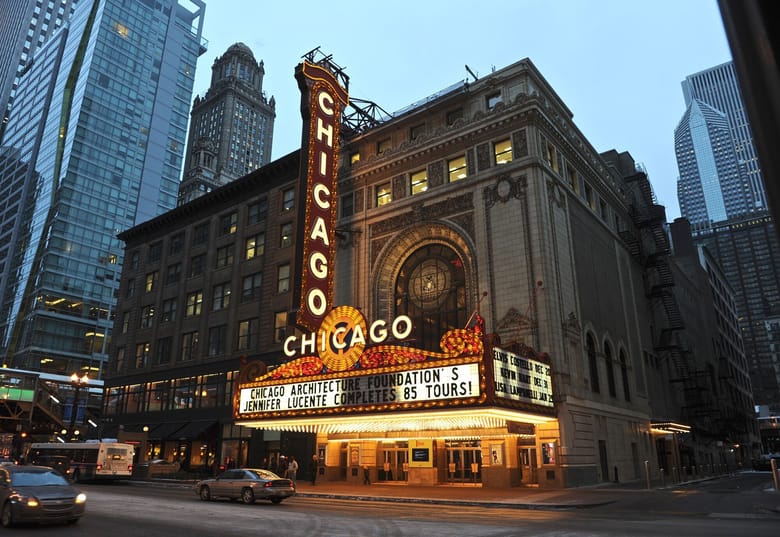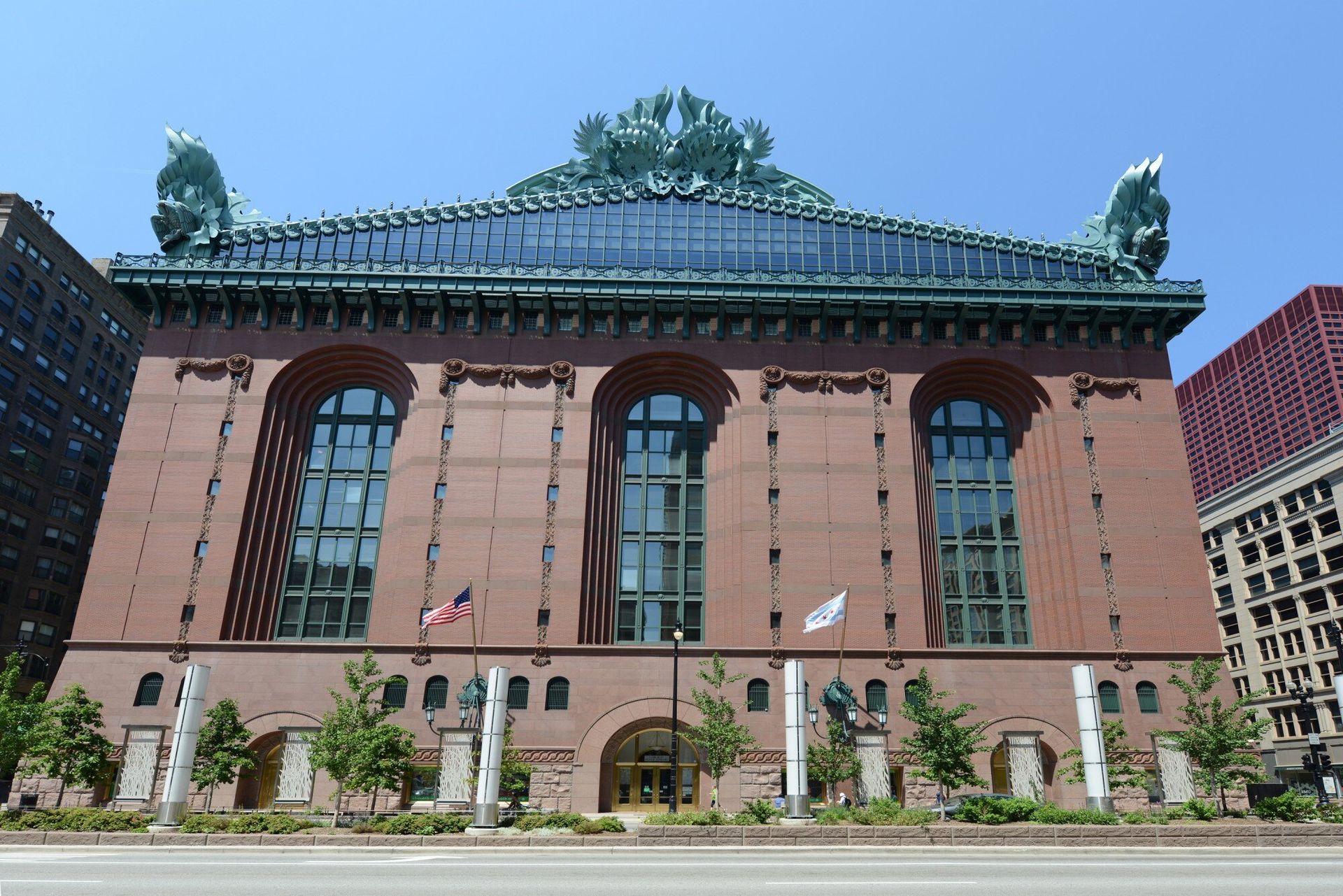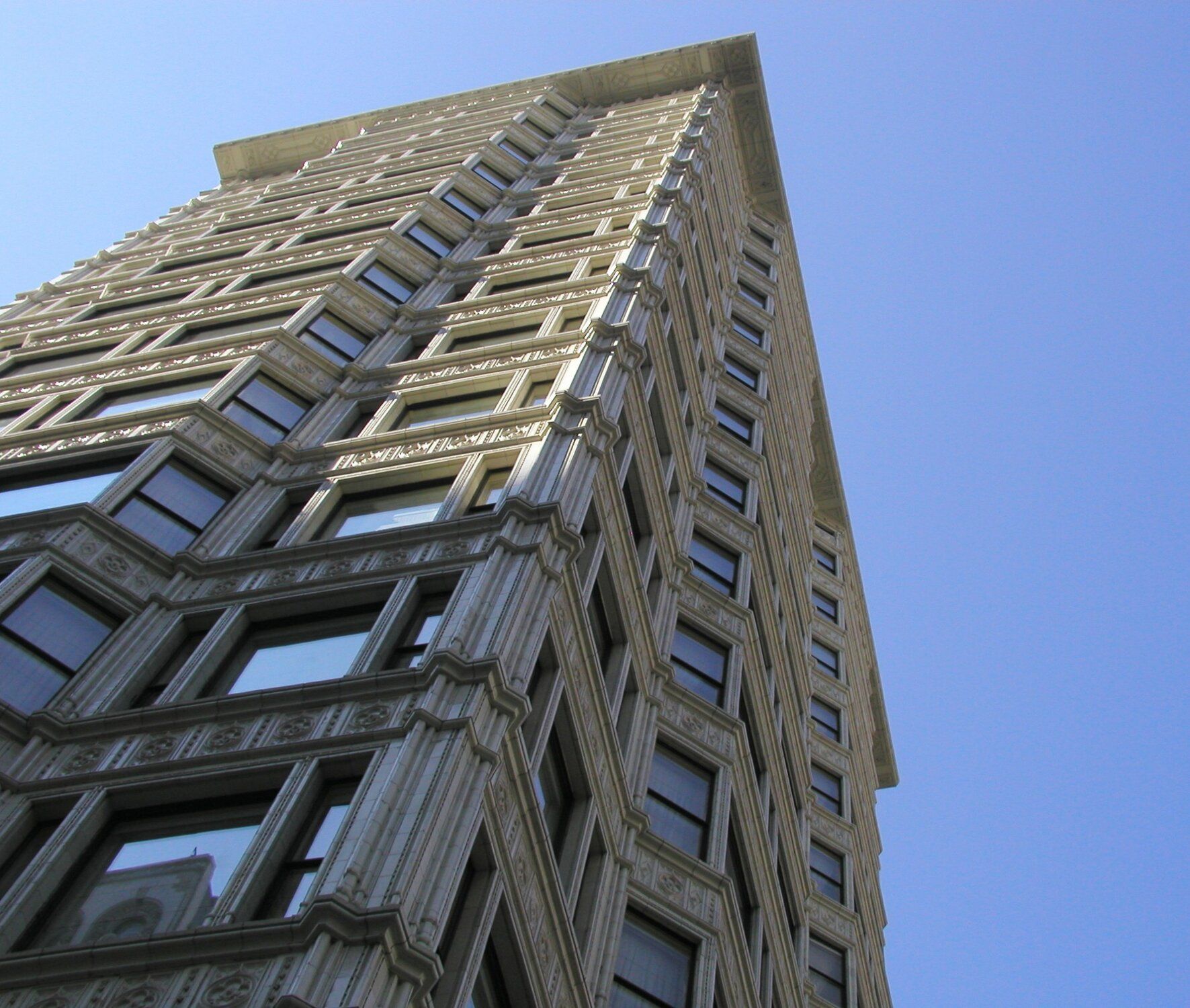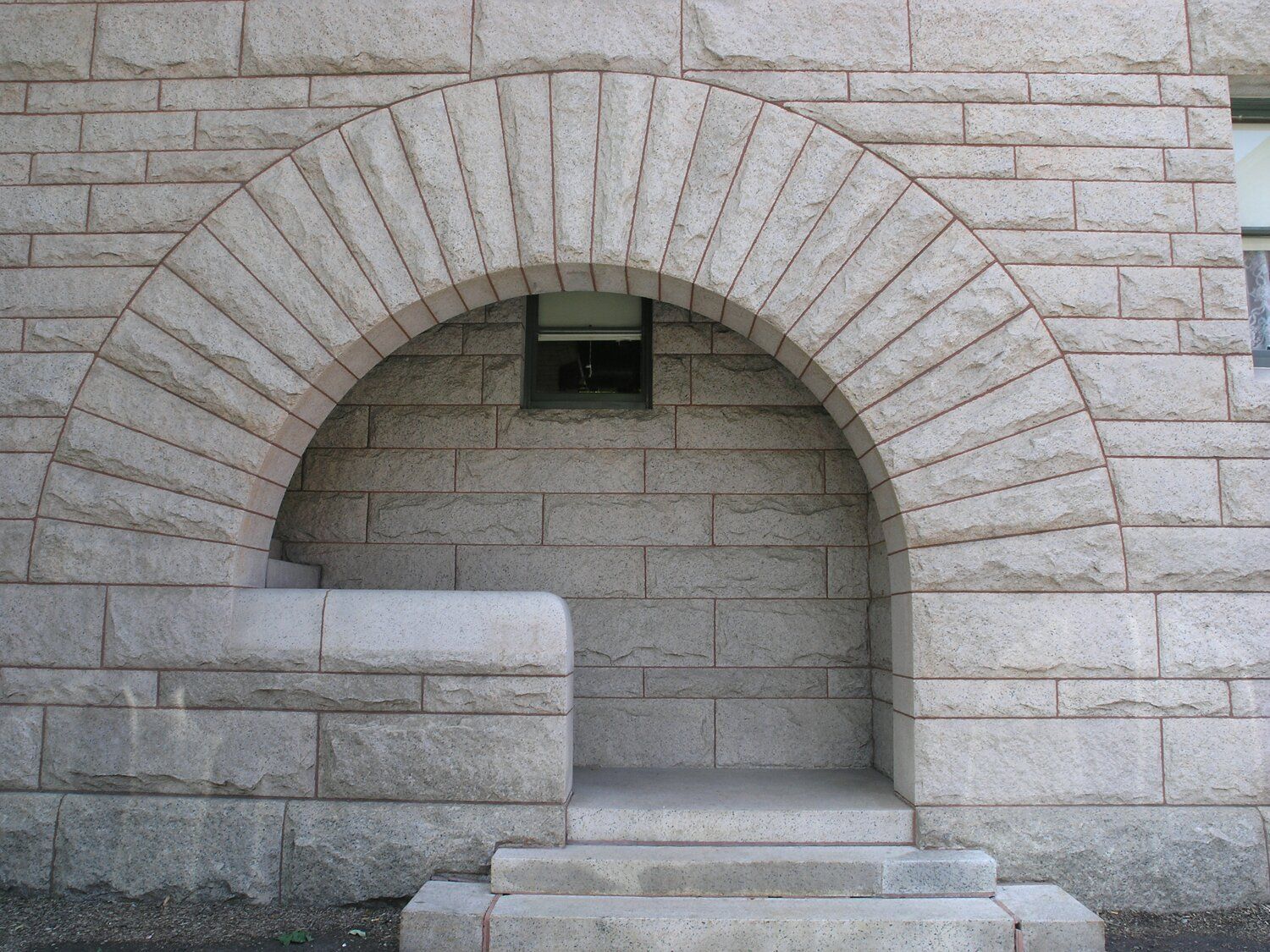Chicago Theatre
American cinema houses like Chicago Theatre evolved alongside new innovations in film.
Courtesy Eric Allix Rogers
Courtesy Eric Allix Rogers
Courtesy Eric Allix Rogers
Around the time that movies began to use sound, the spaces for watching and experiencing them became increasingly extravagant. The Chicago Theatre is a magnificent example of the classic American movie palace.
NOT THE TV NETWORK
In 1902, the first theater specifically designed for showing movies opened in a small storefront in Los Angeles. Three years later, a fancier storefront theater in Pittsburgh charged patrons a nickel to watch movies with piano accompaniment. It was called The Nickelodeon and was among the first of many nickel theaters to pop up around the country. Their huge popularity encouraged filmmakers to begin creating feature-length productions, but there was a problem. Staying longer at the theater wasn’t so appealing, when you consider that hard wooden benches and bare walls were both common. As films got longer, the audience's experience became a focal point for cinema houses.
The Chicago Theatre was designed by C. W. (Cornelius Ward) Rapp and George L. Rapp in the “atmospheric style” they used in many of their early cinema palaces. They considered every inch when designing these theaters, in the hope that they’d transport visitors to another time and place. Attention was given to a visitor’s total experience, from the moment she walked through the front door until she sat down in her seat.
Rapp and Rapp designed the Chicago Theatre in their signature Neo-Baroque French-Revival style. The off-white glazed terra cotta exterior beckons to visitors on the street. Atop the grand marquee is an arch reminiscent of the French Arc de Triomphe. Within it is the logo of the Balaban & Katz movie chain—two horses holding ribbons of 35mm film in their mouths—set inside a circular Tiffany stained-glass window.
The interior is also spectacular, and its design gives visitors the regal treatment. The lobby was inspired by the royal chapel at Versailles, the grand staircase is reminiscent of the Paris Opera, and Louis XIV furnishings were placed throughout the building.
The Chicago Theatre led to much success for Rapp and Rapp. The brothers went on to serve as architects for the entire Paramount/Publix chain, eventually designing hundreds of theaters across the country.
Other well-known theaters designed by Rapp and Rapp in Chicago include:
- The Riviera
- The Uptown
- The Cadillac Palace (originally The New Palace)
- The Oriental
A FEW NIPS AND TUCKS
Three times in the building’s history, it has undergone renovations to keep it ready for its close-ups.
First, it was renovated and redecorated in 1933 in preparation for Chicago’s second World’s Fair, known as “A Century of Progress.“ It was given new interior murals and updated décor.
In the 1950s, the theater was modernized. At around this time, the live performances that had been staged there since the theater’s opening were discontinued.
Its most recent renovation came 20 years later. By the late 1970s, the ornate movie house’s popularity had begun to wane; it was closed in September of 1985. In 1986, Chicago Theater Restoration Associates bought the building to save it from demolition. They began a meticulous nine-month, multi-million dollar restoration and reopened the theater on September 10, 1986, with a gala performance by Frank Sinatra.
Did you know?
The Chicago Theatre was originally known as the Balaban and Katz Chicago Theatre when it opened in October of 1921.
Did you know?
Mayor Richard M. Daley declared July 12, 2005 "Roger Ebert Day in Chicago" and dedicated a plaque under the marquee in his honor.
Did you know?
The entire marquee was replaced in 1994, but retains the look of its predecessor. In 2004, the original marquee was donated to the Smithsonian Institute.
Did you know?
The 3,600 seat Chicago Theatre auditorium is seven stories high.

